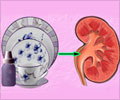A "Hemodialysis International" publication says that treatment through Central vein catheters may block the blood flow in the vessel, leading to superior vena cava syndrome (SVC syndrome),
One technique, inserting a catheter through large vessels, has been commonly used worldwide in recent years. The SVC syndrome caused by central vein catheters results in a highly serious complication.
The warning signs of SVC syndrome include shortness of breath, swelling of the upper limbs, neck and face, which occur as the catheter, generally inserted into a large blood vessel, blocks blood flow. The study stresses the need for clinicians to be able to identify SVC syndrome symptoms in order to prevent more serious complications.“The increasing use of central vein catheters for long-term hemodialysis has contributed high rates of complications,” concludes Hadim Akoðlu, M.D., author of the study. “It seems that SVC syndrome due to central vein catheters will become an important threat as the popularity of this treatment continues to grow.”
Akoðlu suggests that the harmful effects of SVC syndrome can be counteracted if catheters are only used for short periods of time. Treatments for SVC syndrome are also being devised, including thrombolytic therapy, where blood clots are pharmacologically dissolved; percutaneous transluminal balloon angioplasty (PTA); intravascular stent placement; and surgical reconstruction, which re-opens blood flow access in the vessel.
Source-Eurekalert
SPH/C








